In the 1920s, women's gloves evolved from symbols of modesty to vibrant fashion statements that captured the era's cultural shifts. You'd notice long opera gloves at formal events, paired elegantly with evening gowns. Flapper influence encouraged shorter, colorful gloves, showcasing sun-tanned skin and individuality. Materials varied widely; the affluent preferred luxurious silk and leather, while the less wealthy opted for cotton. Gloves signified social status, with proper etiquette dictating their use at gatherings. As societal norms changed, glove-wearing declined, making way for a more liberated style. Explore how these trends shaped the fashion landscape to gain deeper insights.
Historical Context of 1920s Gloves
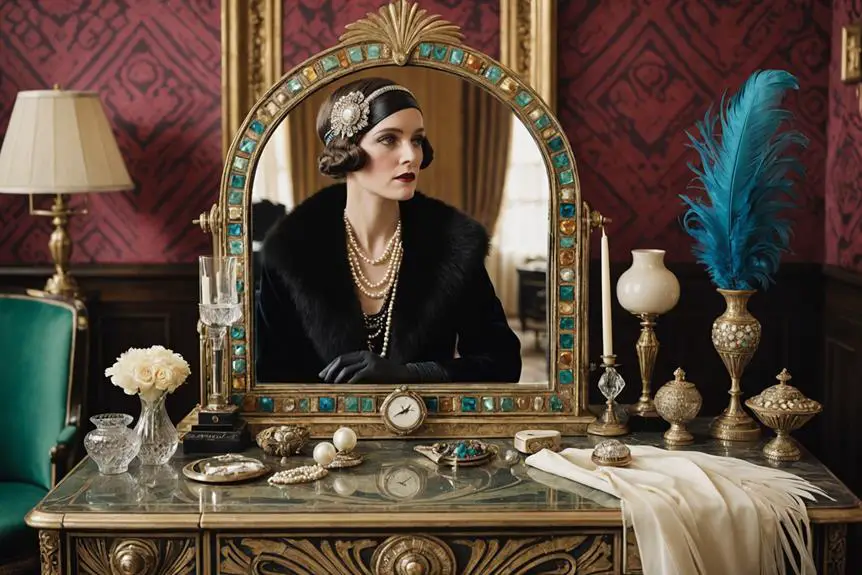
In the 1920s, gloves reflected shifting societal norms and fashion trends, marking a significant evolution in women's accessories. As sun-tanned skin gained popularity, the necessity for gloves diminished, signaling a broader change in attitudes toward modesty and femininity. However, gloves remained indispensable for formal occasions, especially long opera gloves that elegantly complemented evening gowns. The rise of vintage clothing, with its unique labels and craftsmanship, also played a role in how gloves were perceived as fashion statements. The materials used varied widely, with fashionable women from the upper classes opting for luxurious silk and kid leather, while those from lower socioeconomic backgrounds often chose more affordable cotton and fabric options. This disparity highlighted the evolving nature of gloves as a fashion accessory, where quality and design became markers of status, reflecting trends seen in vintage clothing labels.
Influenced by the Art Deco movement, glove designs became increasingly intricate and decorative, featuring bold colors and patterns that aligned with the vibrant aesthetics of the Roaring Twenties. Coordinating gloves with dresses not only showcased a woman's taste but also elevated her overall appearance. Consequently, while gloves may have waned in everyday use, their significance as a vintage statement piece remained strong, embodying the elegance and sophistication of an era in development.
The Flapper Influence
Flapper fashion's influence on the 1920s transformed gloves from mere necessities into vibrant style statements. As a flapper, you embraced a newfound freedom, and your choice of gloves reflected this rebellion against traditional norms. Gone were the long, formal gloves of previous decades; instead, you opted for shorter, lighter options crafted from cotton or lace. This shift not only highlighted your sun-tanned skin but also aligned with the bold, modern silhouettes that defined the era.
Evening wear became a canvas for sophistication, with long, elegant opera gloves seamlessly enhancing your dramatic dresses. These gloves weren't just accessories; they were integral to your overall look, radiating individuality and flair. Playful designs and vibrant colors became the norm, allowing you to express your unique style while participating in the cultural revolution of the time.
Decline of Traditional Gloves
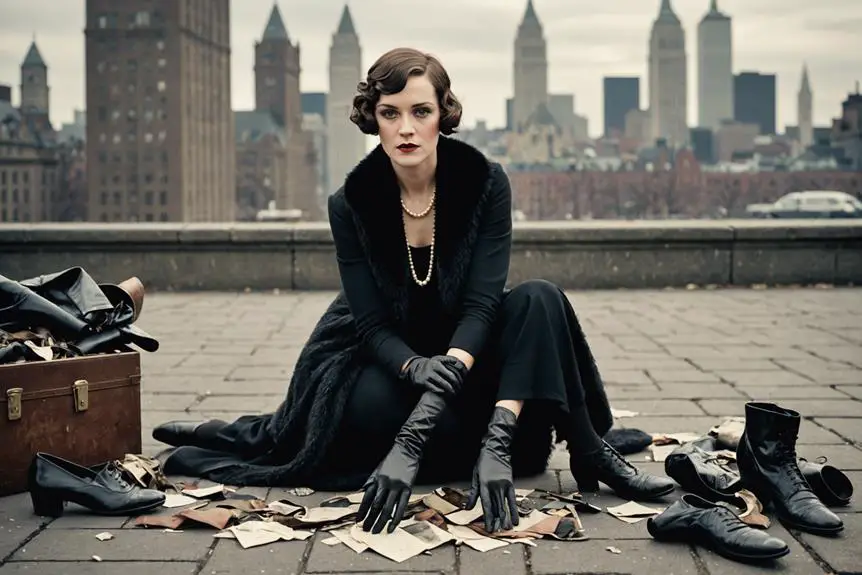
The shift in women's fashion during the 1920s marked a pivotal decline in the traditional use of gloves, reflecting broader societal changes. As sun-tanned skin gained popularity after World War I, women wore less coverage in their attire, signaling a departure from the norms of previous decades. Mid-forearm gloves, once a staple of formal wear, became less essential as casual styles emerged, allowing for more freedom of movement and expression.
While upper-class women still donned evening gloves for formal events, the overall trend leaned toward lighter fabrics and relaxed silhouettes. The introduction of sleeveless dresses further diminished the relevance of gloves, as less arm coverage rendered them redundant for everyday occasions. This change underscored a cultural shift toward a more liberated and carefree lifestyle, where accessories like gloves were no longer deemed necessary.
Materials and Colors
Elegance and practicality intertwined in the materials and colors of women's gloves during the 1920s, reflecting the era's dynamic fashion landscape. You'd find gloves crafted from various materials, including cotton gloves for everyday wear, and luxurious silk gloves or kid leather for more formal occasions. This period also saw the emergence of luxurious accessories, much like the evolution of brands such as Betty Barclay that embraced stylish elements in their designs. Evening gloves, typically longer, elegantly complemented formal dresses, enhancing the sophistication of your look.
Color choices spanned a stylish spectrum, with upper-class women opting for dyed gloves to match their outfits, while those from lower socioeconomic backgrounds often chose neutral shades. Pastel colors, particularly lavender, surged in popularity, aligning with the decade's shift towards lighter, more vibrant hues. Lace gloves emerged as a delicate option, adorned with intricate designs, while gauntlet gloves offered a bold statement, extending beyond the wrist.
The introduction of decorative elements, such as embroidery and intricate cuff designs, added an extra layer of sophistication to glove fashion. These elements not only highlighted your attention to detail but also showcased the evolving aesthetic sensibilities of the time, making gloves an essential accessory for women traversing the stylish landscape of the 1920s.
Popular Styles of the Era
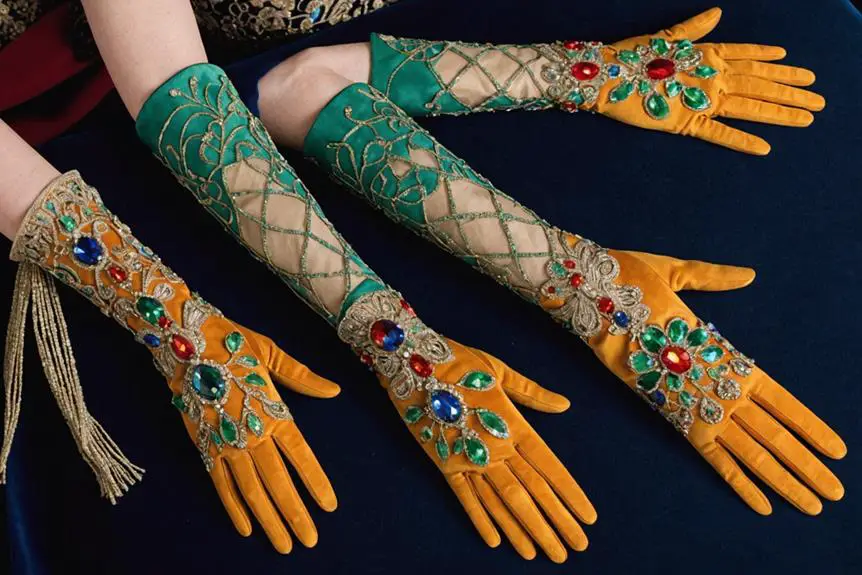
Amid the vibrant fashion revolution of the 1920s, popular glove styles emerged that perfectly mirrored the spirit of the era. You'd find a delightful mix of elegance and playfulness in women's choices. For formal occasions, long opera gloves made of luxurious silk or satin were essential, elevating cocktail and gala dresses. Lace gloves and cotton flapper gloves reflected the more casual, carefree attitude that defined 1920s fashion.
Gauntlet gloves, with their folded-over cuffs, were practical yet stylish for outdoor activities, while elbow-length gloves became a popular choice as well.
As the decade progressed, the introduction of shorter glove styles corresponded with the trend of flaunting sun-tanned skin, indicating a shift away from the long gloves of previous years. Color played a significant role, too; the upper classes often opted for dyed gloves to match their outfits, while the lower classes leaned toward more neutral tones.
Here's a quick overview of glove styles from the era:
| Style | Material | Occasion |
|---|---|---|
| Long Opera Gloves | Silk/Satin | Formal Evening |
| Lace Gloves | Lace | Casual/Daytime |
| Cotton Flapper Gloves | Cotton | Everyday Wear |
| Gauntlet Gloves | Leather | Outdoor Activities |
Gloves and Social Status
Gloves in the 1920s were more than just fashion accessories; they served as a clear indicator of social status and wealth. Wealthier women often donned long gloves, especially in formal settings, to signify their affluence and sophistication. These vintage gloves, sometimes dyed to match their outfits, contrasted sharply with the simpler, white, neutral-colored options favored by lower-class women, highlighting the economic divide of the era. The variety of vintage clothing labels also helped to signify the quality and exclusivity of these gloves, as certain brands became synonymous with elite status.
Specialty gloves, such as driving gloves or those designed for evening wear, were common among the elite, reflecting their leisure pursuits and social engagements. The presence of custom-made gloves marked a significant distinction; ill-fitting, mass-produced options were associated with lower classes, reinforcing the connection between gloves and social hierarchy.
As fashion trends evolved post-World War I, the decline in glove popularity mirrored changing social norms, particularly the rise of sun-tanned skin, which signaled a shift away from the ideals of delicateness. Yet, during the height of the 1920s, gloves continued to symbolize status, encapsulating the intricate relationship between fashion, identity, and societal expectations.
Glove Etiquette in the 1920s
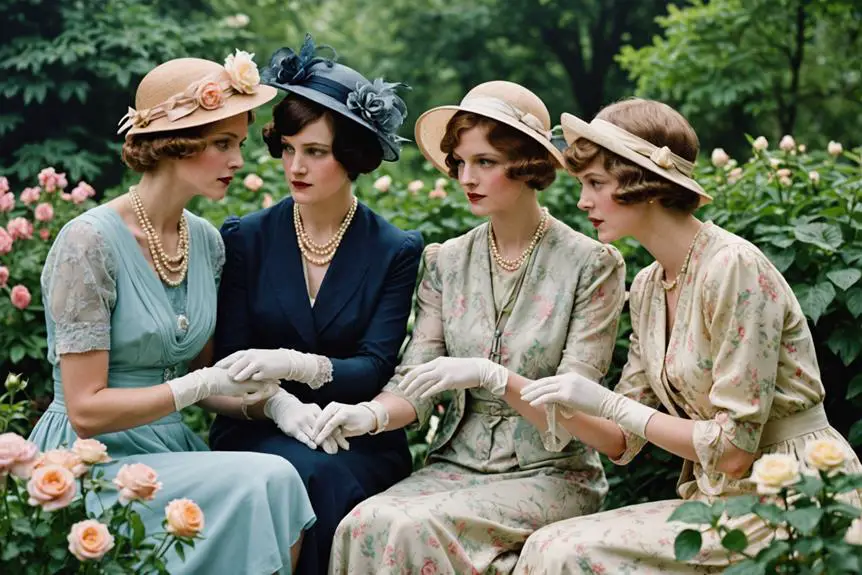
During the 1920s, the expectations surrounding glove etiquette played a significant role in determining a woman's public persona. Wearing long leather gloves or elegant opera gloves was essential for formal events, reflecting a woman's sophistication and social status. You'd find that gloves were typically worn for most public occasions, signaling adherence to societal norms. During meals, however, proper etiquette dictated that you should remove your gloves, placing them delicately on your lap or napkin, never on the table.
The length of gloves varied based on the occasion; shorter gloves sufficed for daytime occasions, while longer, more luxurious options were reserved for evening engagements. Color coordination became a critical aspect of glove etiquette, with women often selecting black silk or white silk gloves that matched their outfits. This attention to detail not only showcased personal style but also indicated one's social standing. A well-maintained pair of women's gloves served as a visible marker of sophistication, where even the condition of the gloves was scrutinized. Ultimately, mastering glove etiquette in the 1920s was integral to maneuvering the complexities of social interactions and public appearances.
Legacy of 1920s Gloves
The evolution of women's gloves in the 1920s marked a turning point in fashion and social norms, as these accessories shifted from essential items to optional adornments. With sun-tanned skin gaining popularity, daily glove usage declined, yet long opera gloves remained a staple for evening events, showcasing elegance and luxury. The intricate designs of gloves from this era, often crafted from lace and leather, reflected the Art Deco movement's decorative aesthetics.
Today, the legacy of 1920s gloves is evident in modern fashion. Vintage styles have made a comeback, influencing contemporary wardrobes and red carpet events alike. Consider the following elements that embody this legacy:
- Long opera gloves that add sophistication to evening wear
- Black lace gloves, perfect for a touch of mystery and allure
- Ivory white gloves that exude timeless elegance
- Dyed leather gloves in vibrant colors that echo the era's fashion consciousness
As you explore your own fashion choices, remember how the 1920s reshaped glove culture, leaving an indelible mark on style that continues to inspire today.
Frequently Asked Questions
What Decade Were Gloves Popular?
Gloves were particularly popular in the 1920s, reflecting a broader fashion transformation. You'd notice how styles shifted from necessity to elegant accessories, emphasizing individuality and social status through colors, materials, and innovative designs that enhanced comfort.
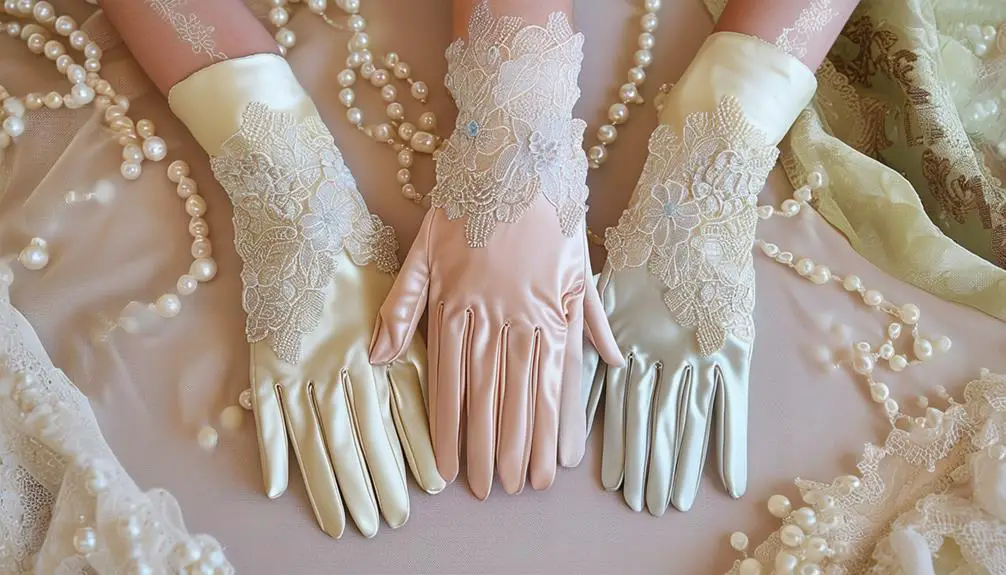


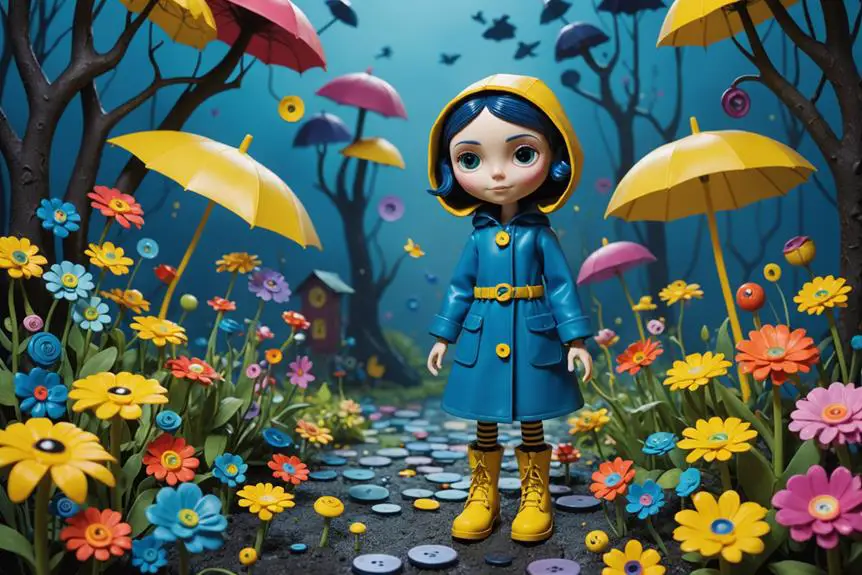
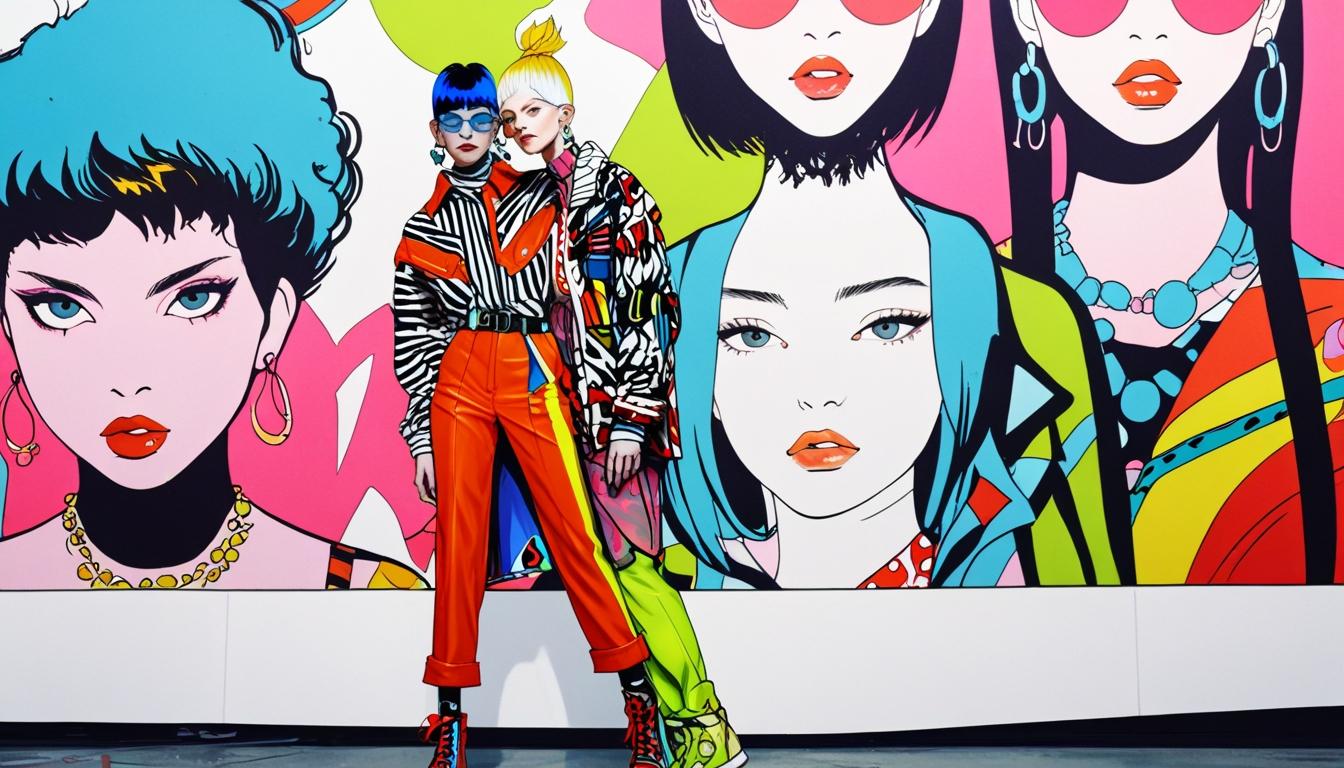
Your point of view caught my eye and was very interesting. Thanks. I have a question for you.
Your article helped me a lot, is there any more related content? Thanks!